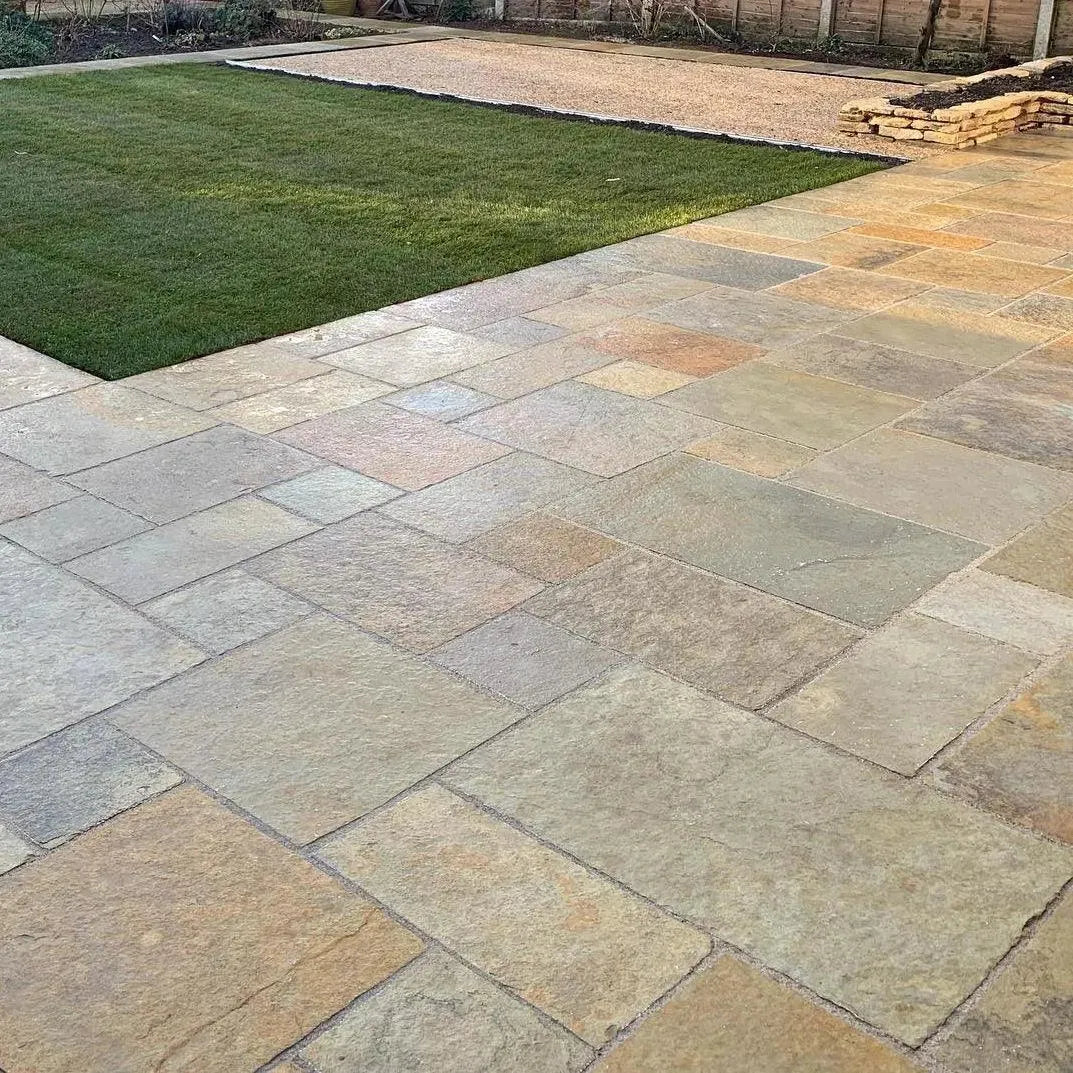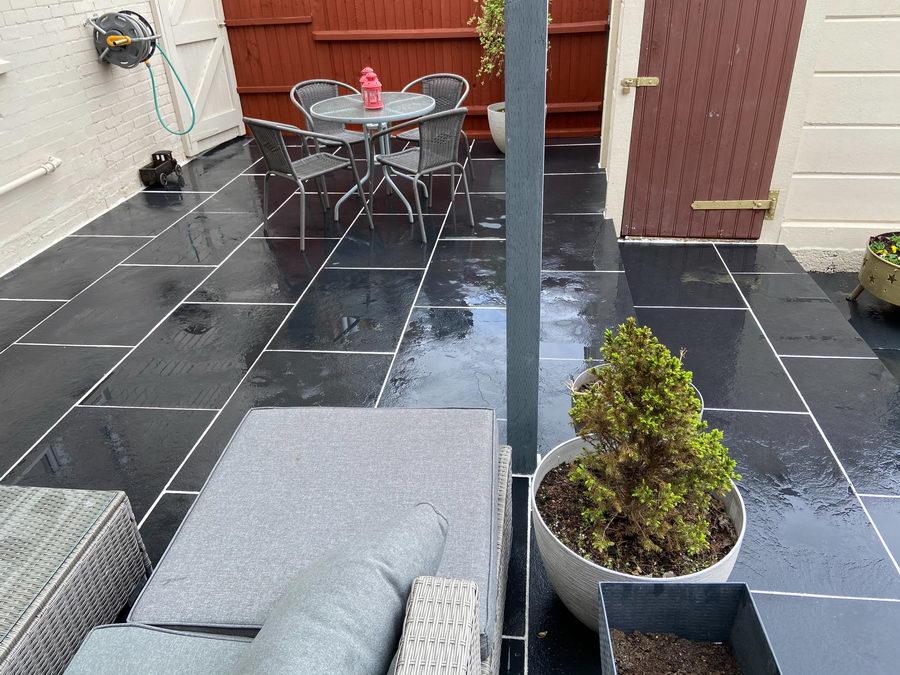When it comes to selecting the ideal natural stone for your paving needs, limestone and sandstone consistently rank among the top choices worldwide. Renowned for their captivating aesthetics and durability, these natural paving stones are favoured for a range of outdoor applications, including driveways, patios, and gardens. Despite their similarities, limestone and sandstone are distinct in various aspects. In this comprehensive comparison guide, we will delve deeper into their characteristics to help you make an informed decision for your project.
Limestone: Limestone is primarily composed of calcite, a mineral responsible for its characteristic chalky texture. The texture of limestone is typically plain and exhibits a consistent appearance.
Sandstone: Sandstone, conversely, is a sedimentary rock composed of sand-sized particles of various minerals, including feldspar and quartz. Its texture is characterized by its sandy, grainy feel.
Distinguishing Characteristics
Durability: Both limestone paving and sandstone paving are known for their robustness and resilience, making them excellent choices for enduring outdoor use. These paving stones have played a significant role in the construction of many historical buildings that still stand strong today. However, sandstone is notably softer than limestone, which makes it easier to work with during installation. On the flip side, this softness can also render sandstone more susceptible to scratching or denting, especially in indoor applications. Despite this, sandstone boasts a higher density than limestone, ensuring its continued popularity in various construction projects.
Acid Reaction: Limestone’s composition, primarily consisting of calcite, makes it prone to active reactions with strong acids. Therefore, it is crucial to avoid using acidic solutions for cleaning limestone pavers and take precautions to prevent staining. Sandstone, conversely, does not react to mild acids, simplifying the cleaning and maintenance process. However, it’s essential to note that strong acids can still damage sandstone, necessitating care in handling.
Water Absorption: While sandstone tends to be slightly more porous and absorb more water than limestone, both stones exhibit remarkable water resistance. The application of treatments and sealants can further enhance their ability to repel moisture. When making your choice, it is advisable to examine the stones when wet to determine which one best suits your specific requirements.
Slip Resistance: Both sandstone and limestone provide excellent slip resistance, thanks to their natural textures. This feature makes them particularly well-suited for wet areas such as swimming pool surrounds and outdoor spaces exposed to heavy rainfall. However, polished limestone should be avoided in indoor spaces, as it can become slippery when wet.
Appearance: Limestone typically features a flatter and more consistent texture, making it an excellent choice for applications like driveways and covered courtyards. Its even finish is well-suited for both indoor and outdoor use. For those who favor a clean and uniform look, options like Indiana White limestone are ideal. However, it’s worth noting that limestone, while excelling in smoothness, offers fewer color variations.

Conversely, sandstone offers a broader spectrum of colors and textures. Its color gradation is more pronounced than that of limestone, ensuring that no two pieces are alike. If you desire a classic, natural appearance, consider options like Sunrise Gold Sandstone, available in a honed finish suitable for various indoor and outdoor applications.
Affordability: In terms of cost, sandstone generally comes in at a lower price point compared to limestone and other natural stones like marble. Locally sourced sandstone is especially budget-friendly, making it a cost-effective choice for your project. Additionally, its ease of workability can reduce labor costs and save time, further enhancing its affordability.
Conclusion
In the limestone vs. sandstone debate, the right choice largely depends on your budget and intended use. If you’re seeking an option for interior flooring or a uniform look around your property, limestone may be the preferred choice. However, if you value a wide range of colours and textures and are looking for a more budget-friendly option, sandstone emerges as the winner.
Regardless of your choice, Paving Slabs UK, a wholesale supplier of premium natural stones, is here to provide quick and efficient delivery to the UK builders, homeowners, and landscapers. If you have any questions or require a sample, please don’t hesitate to visit our online store at Paving Slabs UK. We are dedicated to assisting you in making the perfect selection for your project, ensuring that your paving slabs needs are met with the highest quality available.
Tags: limestone paving, natural paving stones, paving slabs, sandstone paving



